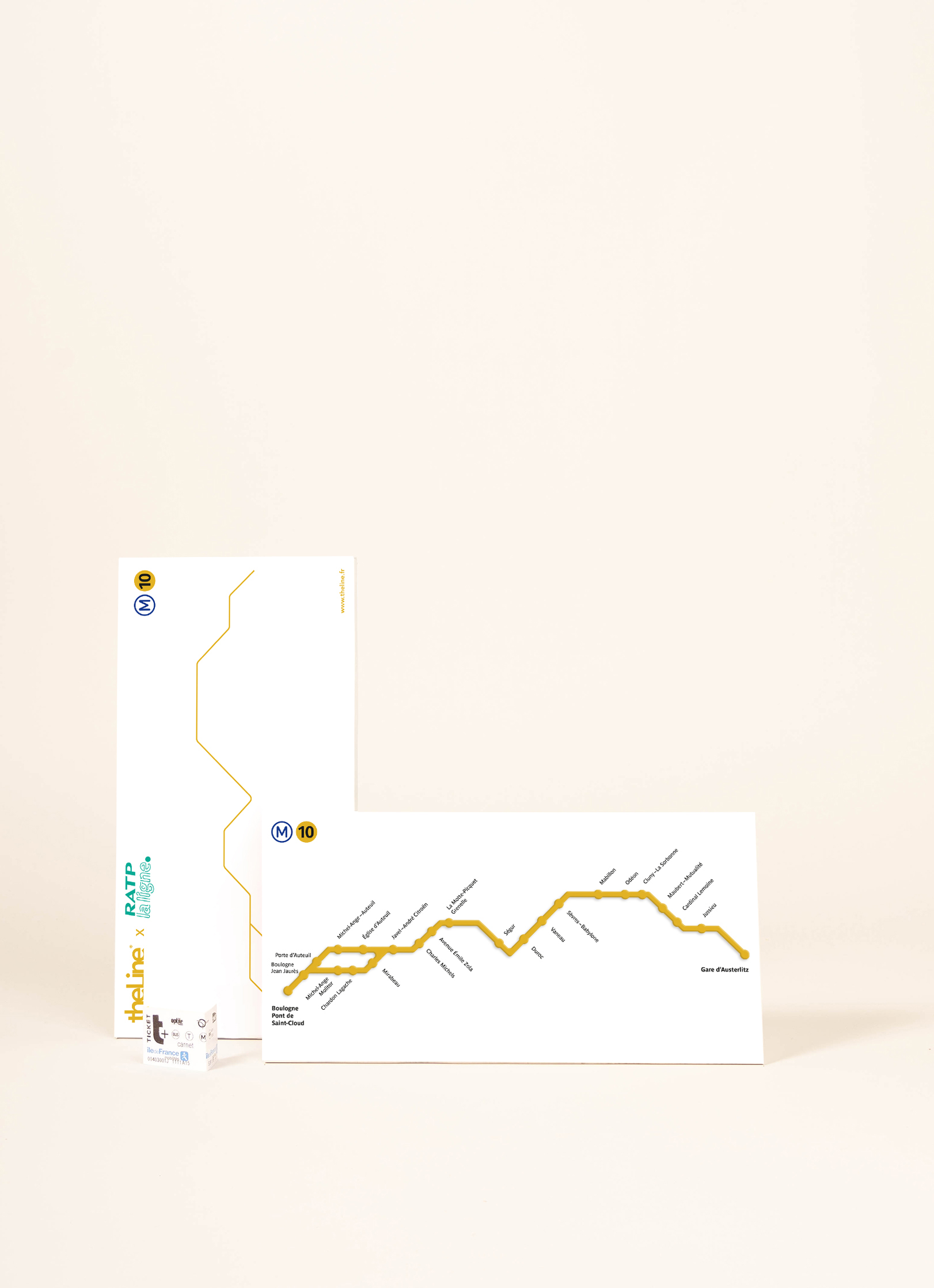Line 10
The Line x RATP la ligne
We have depicted the route of line 10 of the Paris subway and its 23 stations.
With this new format, it is possible to stick, magnetize and even place the line anywhere thanks to its cardboard support on which the names of the stations appear.
The Line x RATP is made in France.
Find out more about Line 10Any order placed before 11:30am (UTC+1) is shipped the same day (except weekends).
Delivery in France in 2-5 working days.
Shipping costs offered in relay points in France.
Indications

-
1.5 mm thick steel line
-
To be wall fixed with 3 nails
-
Inside and outside
-
Super easy
-
Start by nailing the middle of the line, then simply adjust the level
-
Not suitable for brick or concrete walls
About Line 10
This line has undergone a most eventful development, its current route being far removed from the original and intermediate ones. Its history is closely linked to that of lines 7, 8 and 13. Opened in 1923 between the Invalides and Croix Rouge stations (closed since 1939 near Mabillon) via Duroc, it was extended to Porte de Choisy in 1930. It then underwent many changes until 1939, when it adopted its current layout between Porte d'Auteuil and Gare d'Austerlitz. It did not move again until 1981 when it joined the Saint-Cloud bridge.




